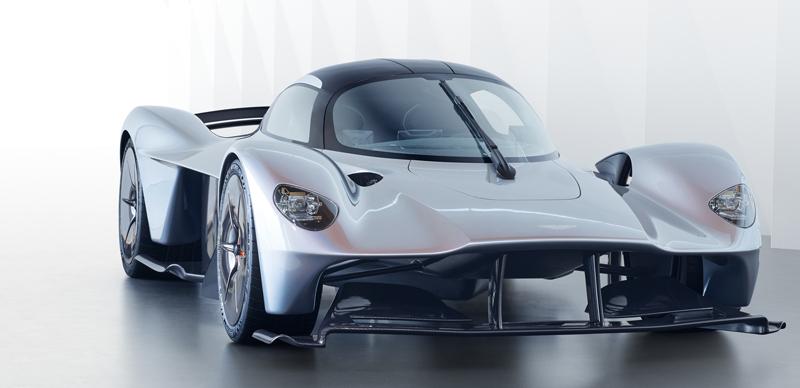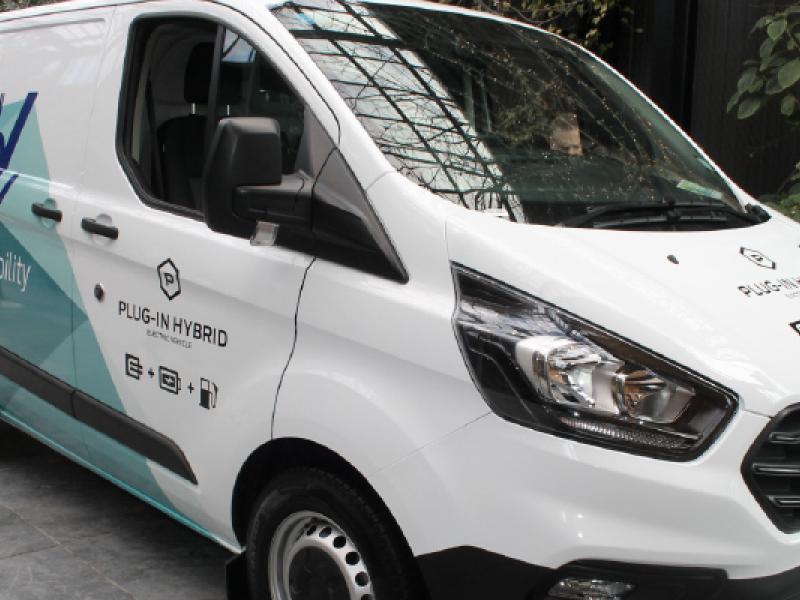Take three of the world’s cleverest automotive creators, mix together, light blue touchpaper and BOOM, it’s the Aston Martin-Red Bull Valkyrie, arguably the most radical production car we’ll see for a long while.
Latest news is that the car will be road legal, although we don’t see anywhere for number plates in this wild design. But never mind that – let’s see what else it HAS got.
The teardrop-shaped cockpit’s upper body surfaces and lower tub contours follow the envelope of space available between the huge full length Venturi tunnels that run either side of the cockpit floor.
Drawing huge quantities of air beneath the car to feed the rear diffuser, these tunnels are the key to generating the Aston Martin Valkyrie’s extraordinary levels of downforce while keeping the upper body surfaces free from additional aerodynamic devices that would spoil the purity of the styling.
To maximise interior space the seats are mounted directly to the tub, with occupants adopting a reclined “feet-up” position reminiscent of today’s Formula One and Le Mans
Prototype race cars, ensuring driver and passenger are extremely safe, perfectly supported and feel completely at one with the car.
The Aston Martin Design team was keen to keep distractions to a minimum and focus the driver on the road ahead. To this end all switchgear is located on the steering wheel, with all the vital signs shown on a single OLED display screen. The steering wheel is also detachable, both to aid ingress and egress, and to serve as an additional security device.
To avoid any unwanted aerodynamic disturbance or stylistic clutter traditional door mirrors have been replaced by discreetly mounted rear facing cameras in each of the Aston Martin Valkyrie’s flanks.
While the essence of the original Aston Martin Valkyrie exterior design remains unchanged, Red Bull’s legendary F1 designer Adrian Newey’s pursuit of downforce and aerodynamic efficiency has driven many detail changes to the bodywork.
One of the biggest changes in this latest model are openings in the body surface between the cockpit and front wheel arches, Newey having found that they were the key to achieving considerable gains in front downforce.
While aerodynamics and downforce are the dominant story, Aston Martin Valkyrie features some delightful details. Some of the most striking are the headlights, which take inspiration from the pure functionality of a Formula One car’s components.
Aston Martin’s designers stripped things back to the bare essentials, celebrating the engineering rather than concealing it behind cladding. The same approach has been taken with the Aston Martin “wings” badge that adorns the nose. With the regular badge considered too heavy, and a simple sticker not befitting for a car of the Aston Martin Valkyrie’s quality and cutting-edge nature, the Aston Martin Design Team came up with a chemical etched aluminium badge just 70 microns thick..
Further detail innovation can be found at the rear of the car, with the centre high mounted stop light (CHMSL). Mounted on the tip of the small shark’s fin that runs down the spine of the Aston Martin Valkyrie’s airbox and rear bodywork, the light is just 5.5mm wide and 9.5mm high.
Several manufacturers (other than Aston Martin and Red Bull) have taken part in the Valkyrie's construction, these being Cosworth, Ricardo, Rimac Automobili, Multimatic, Alcon, Bosch, Surface Transforms, Wipac, and Michelin.
The car contains a 6.5-litre naturally-aspirated V12 tailored by Cosworth, which was initially supposed to make around 1,000hp (74 kW), but it was announced in June that the car would make 1,130hp (843kW). At the same time the power output was released, the weight was also mentioned, at 1,030kg, which surpasses the intended 1:1 power-to-weight ratio, with 1,097hp (818 kW) per ton.
A Rimac-built hybrid battery system, which performs as a KERS system, is installed along with the engine. The power is delivered by a seven-speed paddle-shift transmission constructed by Ricardo.
Bosch supplies the Valkyrie's ECU unit, traction control system, and ESP, and brakes and calipers are provided by Alcon and Surface Transforms. The front and rear lights are constructed by Wipac.
Everything is made of carbon fibre and there is not a single steel component in its entire structure.
The car is installed with a MonoCell from manufacturer Multimatic. Michelin supplies the Valkyrie with the company's high-performance Sport Cup 2 tyres, with 265/35-ZR20 at the front and 325/30-ZR21 at the rear. The wheels are constructed out of lightweight magnesium alloy wheels (20 inch front, 21 inchrear) with race-spec centre-lock wheel nuts to reduce mass.
There are 150 road cars planned, all at the price of US$3.2 million, and there will be 25 track versions.






